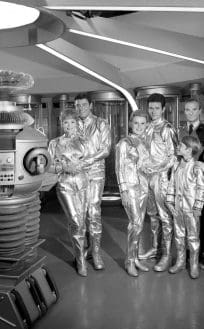Highlights of the September Sky 2018


• Sept 1 – On this day in 1979, NASA’s Pioneer 11 became the first spacecraft to fly by Saturn.

• Sept 2 – The moon is as last quarter. Be sure to get outside during the next two weeks, from around 9:00 PM until midnight in order to see the Summer Milky Way from a dark sky locale.
Look for the Zodiacal Light, the “false dawn”, in the east during the pre-dawn hours over the next two weeks.
• Sept 7 – The moon is at perigee, the closest point to Earth, at 8:20 PM CDT, at a distance of 224,533 miles.

• Sept 8 – Star Trek TV series premiers on NBC in 1966.
• Sep 9 –Moon is at new phase.

• Sept 10 – Comet 21P Giacobini-Zinner is at perihelion (see the September feature).

• Sept 12 – The waxing crescent moon, Venus, and Jupiter will form a nice gathering low in the SW at dusk.

• Sept 13 – The waxing crescent moon and Jupiter pair up in the SW part of the sky at dusk.
• Sept 15 – Comet 21P Giacobini-Zinner can be seen near the open star cluster, Messier 35, in the constellation of Gemini during the pre-dawn hours.

The TV show “Lost In Space” debuts on CBS back in 1965.
• Sept 16 – The moon is at first quarter.
At 8:00 AM, Mars is at perihelion, its closest point to the Sun at a distance of 1.38 AU, or 128.4 million miles.
• Sept 19 – Look for the waxing gibbous moon to be placed near the planet Mars in our evening sky.
• Sept 21 – Venus reaches its peak brightness at a magnitude of -4.8. Through a small telescope or large binoculars, you will see that Venus is at crescent phase. Why is it so bright if less than 30% of its surface is being illuminated by the Sun? The answer is because, at crescent phases, the planet is very close to Earth in its orbit. Unfortunately, Venus is now only about 10 degrees above the horizon and will set about an hour after the Sun sets. If you plan to view the planet, you need to find a clear, unobstructed view to the western horizon.

H.G. Wells was born this day in 1866. Well’s is often considered “the father of science fiction”. His most famous works include: “The Time Machine”, “The First Men In The Moon”, and “The War of the Worlds”.

• Sept 22 – The Sun crosses the celestial equator (an imaginary circle on the sky that represents the Earth’s equator projected out into space,), from north to south, at 8:54 PM CDT. This ushers in the autumnal equinox for the northern hemisphere and the vernal equinox (spring) in the southern hemisphere.

• Sept 24 – Full moon. It is also the Harvest Moon, which is the full moon closest to the autumnal equinox. Normally, the time between successive moonrises is about 50 minutes later than it was the day before. Due to the way that the ecliptic (the apparent path of the Sun, moon, and planets across the sky over the course of a year) is angled relative to the horizon at this time of the year, the time between successive moonrises is shortened over the course of several days. Traditionally, this allowed farmers more light by which they could harvest their crops, hence the name, “Harvest Moon” is applied to the full moons at this time of the year
